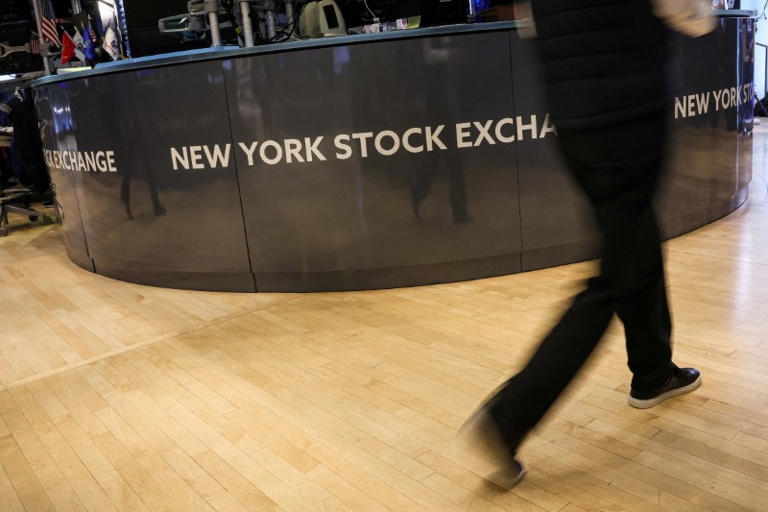The recent volatility surge in global stock markets has resulted in significant financial fallout for various types of investors, particularly those who had bet on continued market stability. This episode underscores the high risks associated with speculative trading strategies that wager against market fluctuations.
Volatility Surge and Market Impact
On Monday, the CBOE VIX index, which gauges market expectations of future volatility based on S&P 500 index options, experienced its largest-ever intraday spike. This dramatic increase pushed the VIX to its highest level since October 2020. The VIX, often referred to as the “fear gauge,” reflects heightened investor anxiety and market uncertainty. This surge in volatility came amid growing concerns about a potential U.S. recession and a significant unwinding of leveraged trades, which together have resulted in a staggering $6 trillion loss in global stock market value over just three weeks.
Financial Impact on Short-Volatility Investors
The financial turmoil has particularly affected investors who had bet against volatility. These investors were primarily involved in short-volatility exchange-traded funds (ETFs), which are designed to profit when market volatility remains low. As volatility surged, these ETFs experienced severe losses. According to data from Reuters and LSEG, these funds have seen approximately $4.1 billion in losses from their earlier highs this year. These ETFs typically thrive in stable or decreasing volatility environments but face significant risks when market conditions shift dramatically.
Growth and Risks of Short-Volatility Trades
The rise in short-volatility trading strategies became notable in recent years, partly due to the increasing popularity of zero-day expiry options. These are short-dated equity options that allow traders to place bets on a daily basis. The introduction of these options has provided more frequent trading opportunities, and their inclusion in ETFs starting in 2023 has further fueled interest in short-volatility strategies. Traders and investors have used these options to profit from periods of low volatility, capitalizing on relatively stable market conditions. From January to early July, the S&P 500’s 15% rise and the VIX’s 7% decline made these bets appear profitable.
Market Reversal and Financial Damage
However, the market dynamics shifted abruptly. On August 5, the VIX spiked sharply, revealing the severe financial damage incurred by those holding short-volatility positions. Larry McDonald, author of “How to Listen When Markets Speak,” highlighted that publicly available data likely underestimates the full extent of the losses experienced by hedge funds and pension funds, which often engage in private trades through banks. As of Wednesday, the VIX had retreated to around 23 points, but it remained significantly elevated compared to levels just a week earlier.
Complex Trading Strategies and Institutional Involvement
The recent market turmoil has also impacted hedge funds engaged in complex trading strategies. For instance, some hedge funds had bet on a divergence between the low volatility of the S&P 500 index and individual stocks, which had reached all-time highs in May. According to Barclays research, these funds faced significant losses, especially on August 5. Data from PivotalPath, a hedge-fund research firm, indicated that hedge funds specializing in volatility strategies experienced a range of returns, with those holding short positions suffering substantial losses.
Role of Banks and Hedging Practices
Banks have played a crucial role in managing these trades, particularly for larger clients. The Bank for International Settlements (BIS) noted that post-2008 regulations have limited banks’ ability to hold risk, including volatility trades. To manage these risks, banks engage in hedging practices, such as buying the S&P 500 when it falls and selling when it rises, to dampen market volatility. However, some of the more complex trade structures offered by banks, including those from Barclays, Goldman Sachs, and Bank of America, lacked continuous hedging and were protected only periodically. This gap in protection may have exacerbated losses as volatility surged.
Market Dynamics and Speculative Strategies
The recent spike in market volatility underscores the cyclical nature of financial markets and the inherent risks associated with speculative trading strategies. When markets appear stable, investors may become complacent and engage in risky bets, such as short-volatility trades. However, exogenous factors, such as sudden shifts in economic conditions or market sentiment, can lead to rapid reversals and significant financial losses. As Michael Oliver Weinberg, professor at Columbia University, observed, the cycle of market complacency followed by sudden turmoil is a recurring theme in financial markets.
In summary, the recent volatility surge has highlighted the high risks associated with short-volatility trading strategies. As market conditions shifted unexpectedly, investors who had bet on continued stability faced substantial losses, revealing the dangers of speculative trading and the importance of effective risk management. This episode serves as a reminder of the volatile nature of financial markets and the need for caution when engaging in high-risk trading strategies.
